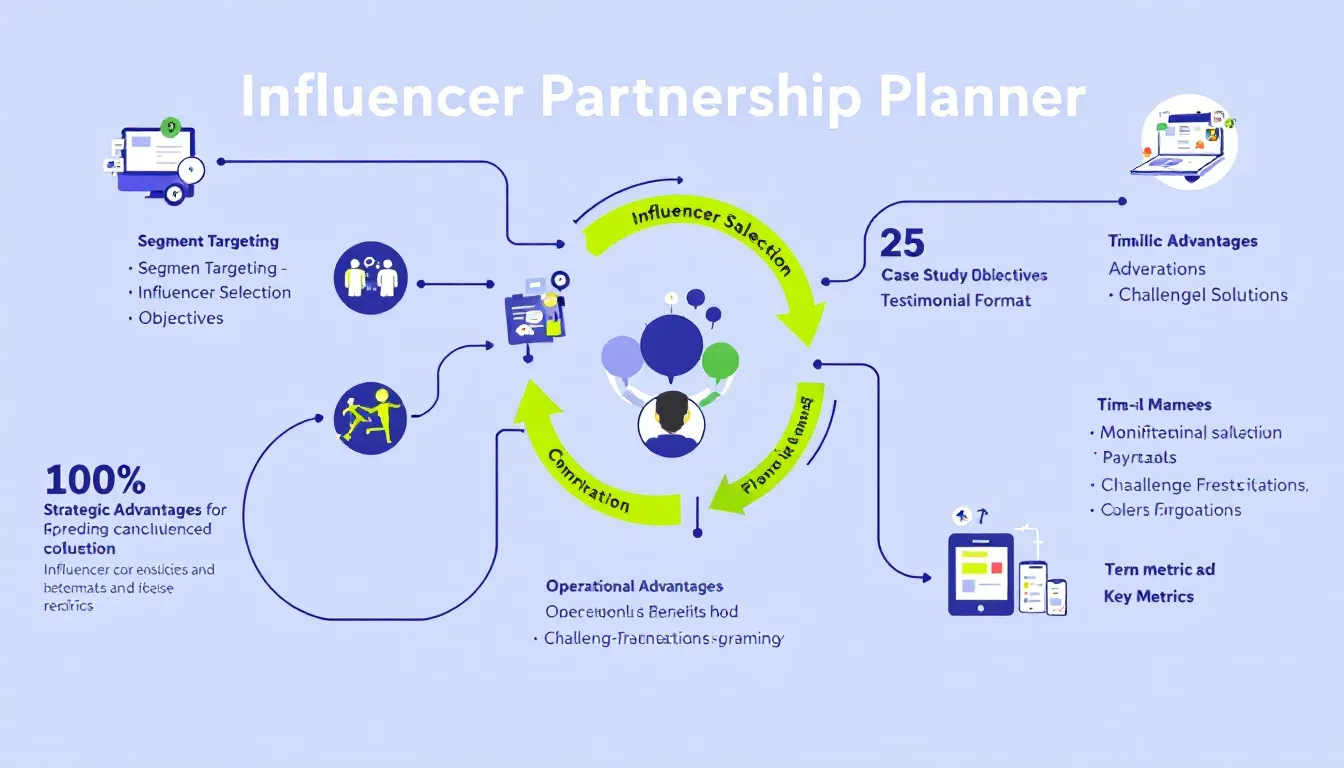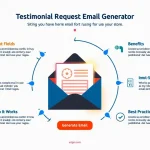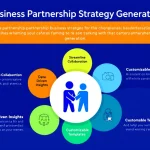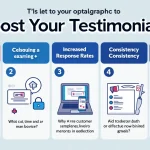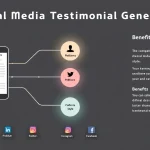Generating plan...
Is this tool helpful?
How to Use the Influencer Partnership Planner Tool Effectively
To maximize the effectiveness of the Influencer Partnership Planner Tool, follow these step-by-step instructions for each field:
Target Business Segment Field
Enter your specific market segment. For example:
- Enterprise SaaS Solutions for Manufacturing Industry
- Sustainable Fashion Retail for Millennials
Influencer Criteria Section
Detail your requirements for potential influencers. Sample inputs:
- Tech influencers with 50K+ LinkedIn followers, minimum 5 years industry experience, proven track record in cloud computing, regular speaking engagements at technology conferences
- Sustainability advocates with verified credentials, minimum 100K Instagram followers, demonstrated expertise in eco-friendly fashion, engagement rate above 3%
Case Study Goals Field
Outline your objectives clearly. Example entries:
- Demonstrate 40% reduction in operational costs, improved workflow efficiency metrics, integration success stories with legacy systems, customer satisfaction scores above 90%
- Showcase carbon footprint reduction achievements, supply chain transparency improvements, customer retention rates, sustainable material adoption metrics
Understanding the Influencer Partnership Planning Tool
The Influencer Partnership Planner is a comprehensive tool designed to streamline and optimize your approach to gathering authentic testimonials and compelling case studies through strategic influencer collaborations. It helps businesses create structured, measurable campaigns that leverage influencer relationships for maximum impact.
Core Components of the Tool
- Segment targeting framework
- Influencer selection criteria matrix
- Case study objective mapping
- Testimonial format optimization
- Timeline planning integration
Benefits of Using the Influencer Partnership Planner
Strategic Advantages
- Structured approach to influencer selection
- Clear alignment between business goals and partnership outcomes
- Enhanced credibility through targeted testimonials
- Optimized resource allocation
- Improved campaign measurement capabilities
Operational Benefits
- Streamlined partner selection process
- Standardized evaluation criteria
- Consistent testimonial collection methodology
- Efficient timeline management
- Scalable partnership framework
Problem-Solving Capabilities
Challenge: Influencer Selection
The tool addresses the complex task of identifying suitable influencers by providing a structured criteria framework. For instance, a cybersecurity company might input:
- Industry: Enterprise Security
- Criteria: CISSP certification, 10+ years experience, regular contributions to security publications
- Goals: Document implementation success in financial institutions
Challenge: Case Study Development
For structured case study development, the tool helps organize objectives and metrics. Example application:
- Healthcare Technology Implementation
- Metrics: Patient satisfaction scores, reduction in wait times, staff efficiency improvements
- Format: Video testimonials from department heads and practitioners
Practical Applications and Use Cases
Technology Sector Example
A cloud computing provider utilizing the tool:
- Target: Enterprise IT Decision Makers
- Influencer Profile: CIOs and IT Directors
- Case Study Focus: Digital transformation success stories
- Timeline: 6-month campaign
Professional Services Example
A management consulting firm’s approach:
- Target: Mid-market Business Leaders
- Influencer Type: Industry Thought Leaders
- Testimonial Format: Written case studies with video supplements
- Campaign Duration: Quarterly releases
Frequently Asked Questions
What types of businesses can benefit from this tool?
The tool is valuable for any business seeking to leverage influencer partnerships for testimonials and case studies, including B2B services, technology companies, professional services firms, and consumer brands.
How long should an influencer partnership campaign typically run?
While campaign durations vary based on objectives, most successful campaigns run for 3-6 months to allow proper relationship building and content development.
What makes an effective influencer criteria list?
Effective criteria should include specific, measurable elements such as audience size, engagement rates, industry expertise, and relevant certifications or achievements.
Should testimonials follow a specific format?
The most effective format depends on your target audience and distribution channels. The tool allows flexibility in choosing between video, written, or mixed-media formats.
How can I measure the success of influencer partnerships?
Success metrics should align with your specified case study goals, including quantitative measures like engagement rates and qualitative feedback from target audiences.
Can I run multiple influencer campaigns simultaneously?
Yes, the tool can help plan and manage multiple concurrent campaigns by organizing different segments and objectives separately.
What are the key elements of a successful case study?
Effective case studies should include clear problem statements, solution implementation details, measurable results, and authentic testimonials from key stakeholders.
How often should I update my influencer partnership strategy?
Regular quarterly reviews of your partnership strategy allow for optimization based on performance data and changing market conditions.
The Influencer Partnership Planner Tool empowers businesses to create systematic, results-driven approaches to gathering and leveraging social proof through strategic influencer collaborations. By following the structured approach outlined above, organizations can develop more effective, measurable partnership campaigns that deliver authentic testimonials and compelling case studies.
Important Disclaimer
The calculations, results, and content provided by our tools are not guaranteed to be accurate, complete, or reliable. Users are responsible for verifying and interpreting the results. Our content and tools may contain errors, biases, or inconsistencies. We reserve the right to save inputs and outputs from our tools for the purposes of error debugging, bias identification, and performance improvement. External companies providing AI models used in our tools may also save and process data in accordance with their own policies. By using our tools, you consent to this data collection and processing. We reserve the right to limit the usage of our tools based on current usability factors. By using our tools, you acknowledge that you have read, understood, and agreed to this disclaimer. You accept the inherent risks and limitations associated with the use of our tools and services.
